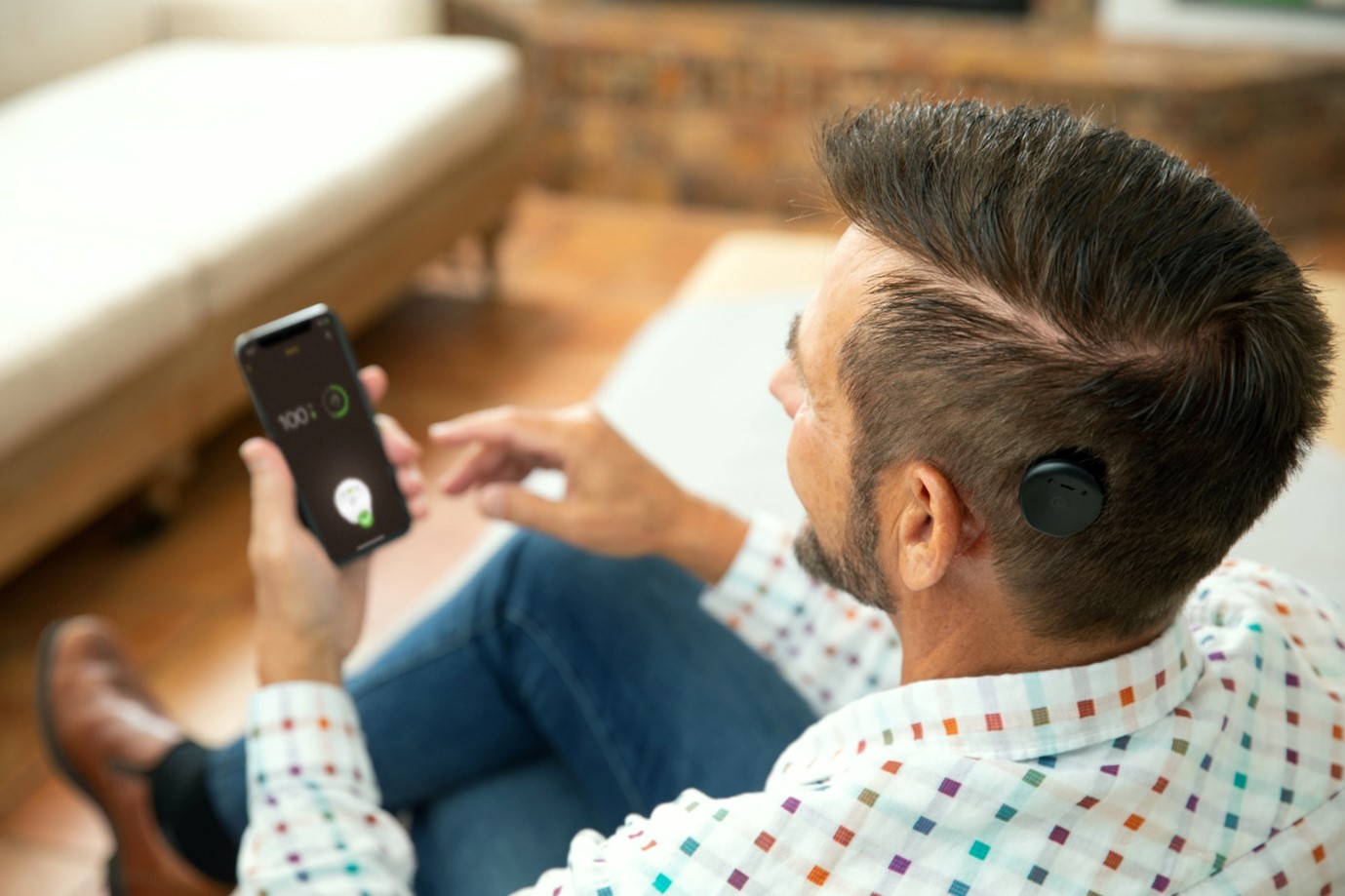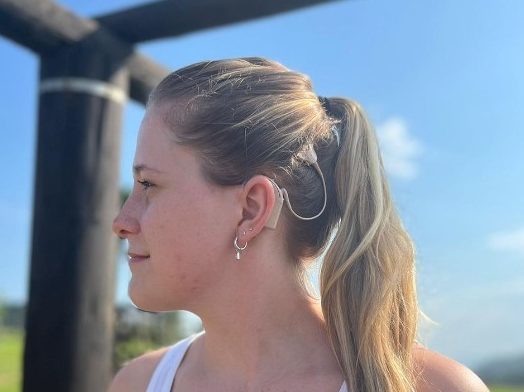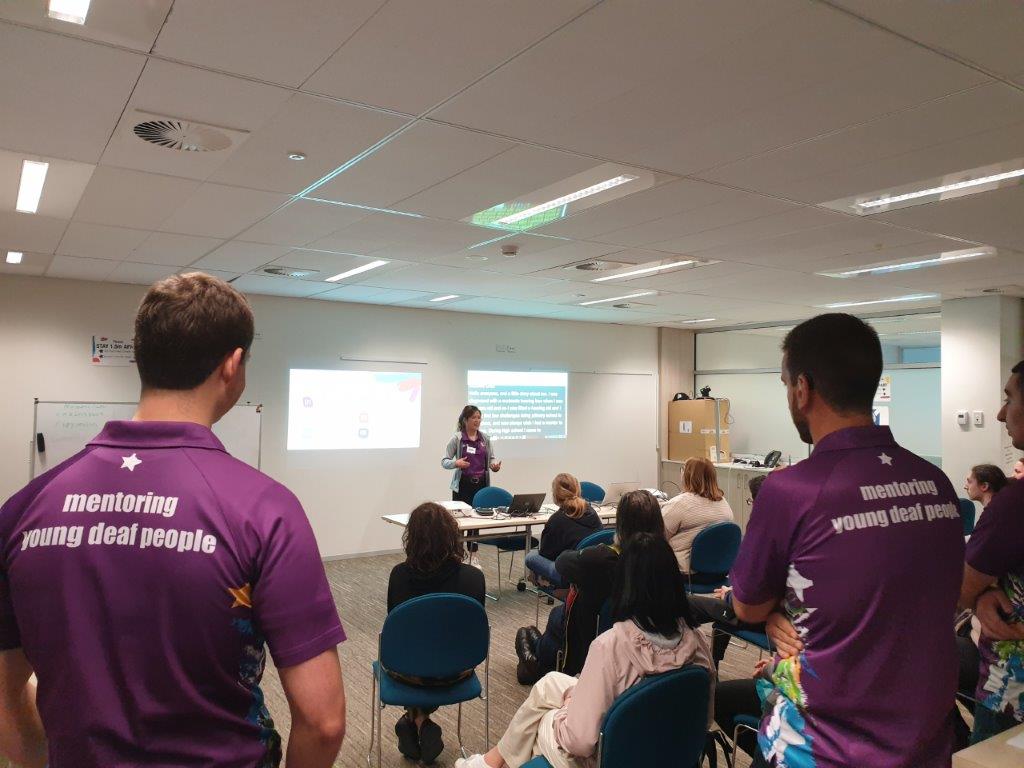Many adults who have been fitted with a cochlear implant still have some useful hearing remaining in the other ear. When a hearing aid is provided to boost the sounds on the opposite side, the two devices working in partnership can provide some significant benefits compared to wearing a cochlear implant on its own. This is called bimodal hearing. Your brain is clever enough to process the signals from both ears and may provide the following advantages1-7:
- Improved speech understanding speech in background noise
- Improved quality of life
- Better awareness of where a sound is coming from
- Improved music appreciation
Although a recipient wearing a Nucleus® sound processor can benefit from any model of hearing aid worn in the opposite ear, our strong partnership with GN ReSound has resulted in an even better listening experience when fitted with a compatible GN ReSound hearing aid. This is because an audio signal can be streamed directly to both devices, cutting out background noise that often makes listening to speech or music challenging.
Direct streaming could be from your mobile device. Telephone calls with your loved one can now be less tiring, and listening to a podcast or your favourite playlist on Spotify can be more enjoyable.
The partnership between GN ReSound and Cochlear also means that our True Wireless™ devices can stream to both the sound processor and the hearing aid at the same time. This is applicable when using the Mini Mic 2 to hear someone talking at a distance or streaming a signal directly from your TV using the TV Streamer.
If you want to find out more about the benefits of bimodal hearing and the Bimodal Smart App, visit www.cochlear.com or talk to your clinician.
For compatibility information and devices visit www.cochlear.com/compatibility and www.resound.com/compatibility
References
- Farinetti A, Roman S, Mancini J, et al. Quality of life in bimodal hearing users (unilateral cochlear implants and contralateral hearing aids). Eur Arch Otorhinolaryngol (2015 Nov); 272, 3209–3215.
- Ching TY, Incerti P, Hill M. Binaural benefits for adults who use hearing aids and cochlear implants in opposite ears. Ear Hear (2004 Feb); 25, 9–21.
- Potts LG, Skinner MW, Litovsky RA., et al. Recognition and localization of speech by adult cochlear implant recipients wearing a digital hearing aid in the nonimplanted ear (bimodal hearing). J Am Acad Audiol (2009 Jun); 20, 353–373.
- Morera C, Cavalle L, Manrique M, et al. Contralateral hearing aid use in cochlear implanted patients: Multicenter study of bimodal benefit. Acta Otolaryngol (2012 Jun); 132, 1084–1094.
- Gifford RH, Dorman MF, McKarns SA, Spahr AJ. Combined electric and contralateral acoustic hearing: Word and sentence recognition with bimodal hearing. Journal of Speech, Language, and Hearing Research. (2007 Aug) 1;50(4):835-43.
- Sucher CM, McDermott HJ. Bimodal stimulation: benefits for music perception and sound quality. Cochlear Implants International. (2009 Jan); 1;10(S1):96-9.
- Buchman CA, Herzog JA, McJunkin JL, et al. Assessment of Speech Understanding After Cochlear Implantation in Adult Hearing Aid Users: A Nonrandomized Controlled Trial. JAMA Otolaryngol Head Neck Surg. Published online (2020 Aug). doi:10.1001/jamaoto.2020.1584.



